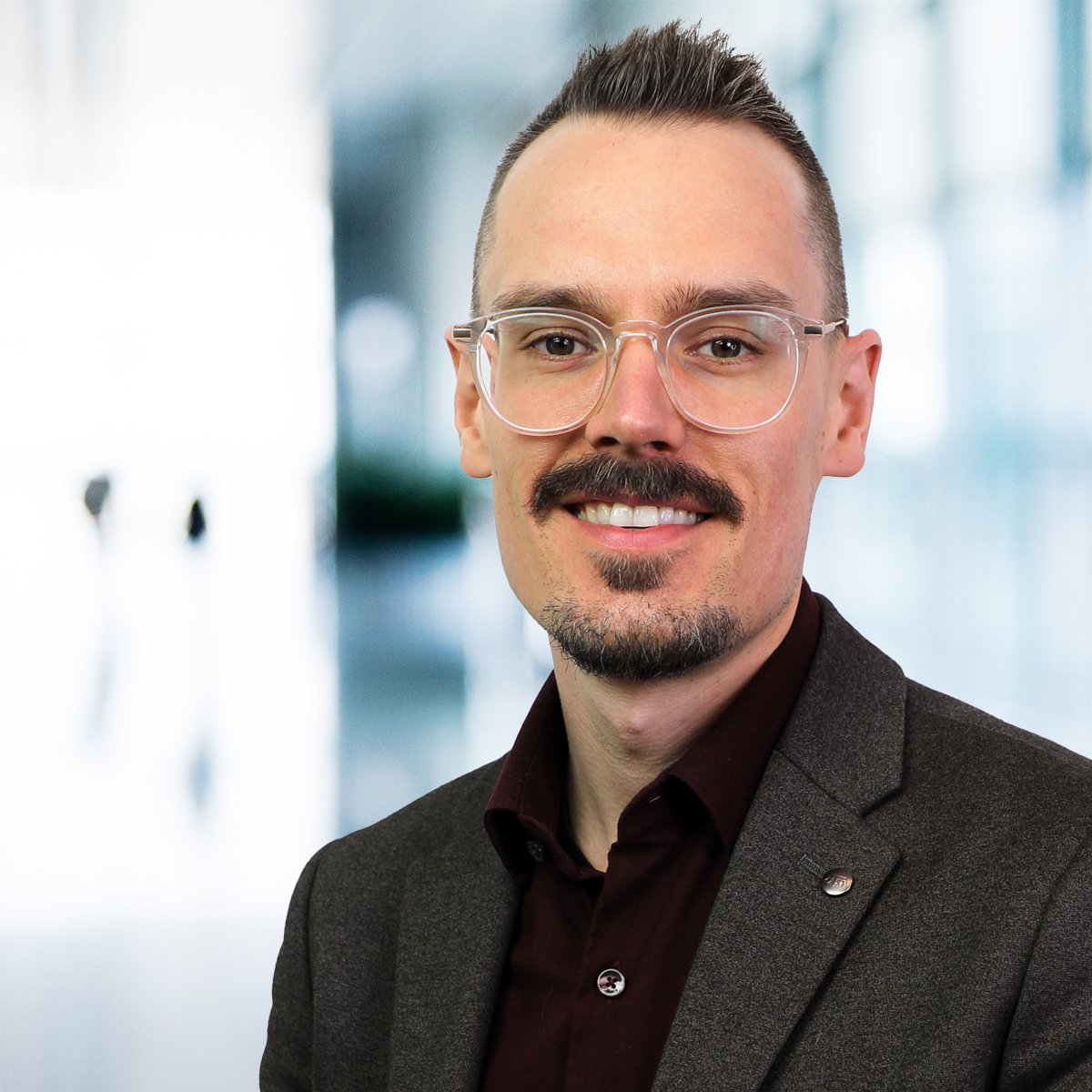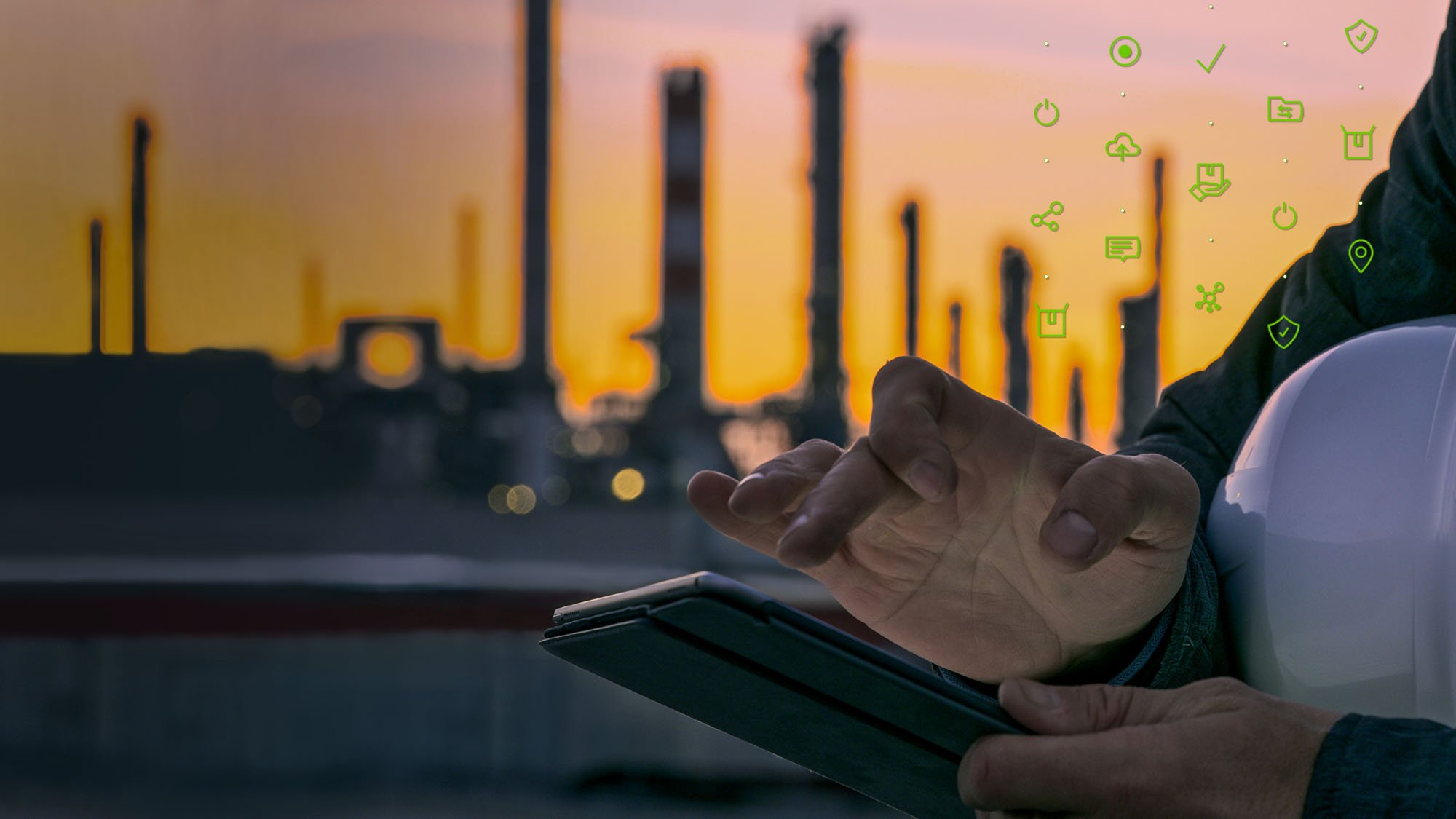Added Value out of the Box


Welding robots are an indispensable manufacturing technology for Liebherr-Hydraulikbagger GmbH. The company from Kirchdorf an der Iller (Upper Swabia) is the world's market leader in mobile excavators. But they can do even more: The robots, like all industrial systems and machines, also produce many kinds of data. Drawing on this source makes it possible to increase value creation and efficiency – not only in manufacturing, but also in many other fields of activity, in financial controlling and maintenance, as well as in IT management or purchasing.
However, this assumes that the relevant data can be read from the systems and machines, consolidated, analyzed and linked to other data. Liebherr IT-Services GmbH has now created a powerful, scalable infrastructure for all these tasks: a compact, modular IoT box, which, when installed near the respective system or machine, receives the data via a network cable, processes it on site, evaluates it and makes it available to higher-level systems such as PLM or MES.
“Both IoT box hardware and software are characterized by their extreme flexibility,” explains Torben Handeck, Head of Programming and Welding at Liebherr-Hydraulikbagger GmbH. “We can connect any systems and machines there. With the data collected, it is then possible to perform the diverse analyses that provide us with valuable knowledge for all possible tasks.”

“Problem Solver for a Wide Range of Specialty Areas”
This makes the IoT box a “problem solver in a wide range of specialty areas,” says Handeck, “regardless of the perspective from which one looks at a system or machine.” As a concrete example, he cites the welding wire drums that supply welding robot systems with material. “We can now retrofit a scale and attach it to the IoT box. The employees at the system thus have a clear view of how much wire is still in the drums so that they can provide supplies in time,” explains the expert. However, it would also be possible to make the consumption data available to the purchasing department in an automated manner. This reduces the workload of our colleagues in production.
In addition, the IoT box can create a completely new business model for this task. “We could give the data to a service provider who then ensures that the system is reliably supplied with sufficient welding wire without the employees having to work in the production or purchasing department,” explains Handeck. “This way provides considerable efficiency!”
With the IoT box, Liebherr can not only optimize existing processes. At the same time, the company is preparing itself for future opportunities and challenges. With this infrastructure, Liebherr-Hydraulikbagger GmbH and the other Liebherr plants now have an IT basis on which to develop and implement future business models that nobody is thinking of today.


WAGO Makes Stand-Alone Solutions Obsolete
The core of the IoT box is a PFC 200 Controller from WAGO. It records all relevant data from the system or machine, as well as from sensors on peripheral devices that are not recorded by the machine control system. “If the PFC200's basic connectivity is not sufficient, it can be easily expanded with additional modules or bus couplers from WAGO's modular I/O system," explains Matthias Morath, PLM Innovation Consultant at Liebherr IT-Services. This makes it possible to connect virtually any system to the infrastructure, regardless of its manufacturer and age, without significant expense. This is a great advantage, especially for companies with a wide product portfolio, as is the case with Liebherr-Hydraulikbagger GmbH. This avoids isolated solutions: “Thanks to the controller's flexibility, we do not have to implement a separate system for every digitalization task,” says the expert.
Data is harmonized to a defined data model directly on the PFC200. “Because of the heterogeneity of the connected systems and machines, it is more efficient to do this directly on the controller,” explains Morath. Either a PLC program or a micro service is used there, which runs as a customized Docker container on WAGO's product. “Ultimately, the advantage is that IT can maintain and orchestrate the software worldwide with a standard tool and further develop it based on new use cases,” explains Morath. With protocols such as MQTT, the harmonized data is then transferred to the higher-level systems on a server or in a cloud, for example, for predictive maintenance or PLM. Alternatively, it would, of course, also be possible to import the non-harmonized raw data into systems.
Why did Liebherr decide to rely on WAGO for such a central application? “Both companies have something very important in common: They are family-run technology companies and commit to long-term product investment,” says Morath. “Like Liebherr, WAGO focuses on the customer and their needs. This is noticeable at every point, in the service as well as in the technology.” Of course, Liebherr also created a hard benchmark for both hardware and software during the selection process. “Here, WAGO's services clearly stood out from the competition,” he reports.


Infrastructure Gradually Expanded
So far, five IoT boxes have been implemented, all at Liebherr-Hydraulikbagger GmbH. “We are gradually expanding this infrastructure,” says Handeck. The box manufactured by Liebherr IT-Services at a site in Oberopfingen, Swabia, is also available to the other Liebherr plants. In addition, Liebherr is cooperating with its IoT box in the “European 4.0 Transformation Center” (E4TC) at RWTH Aachen, where the university is testing technologies for implementing digitalization strategies together with renowned partners from industry and research. Coupled with a laser cutting machine, Liebherr wants to demonstrate possible application areas for the box here and further its development.
Text: Ralph Diermann – Energy Journalist
Photo: Ian Siepmann/Tremonia

Industrial Internet of Things
Digitalization
For Tomorrow's Industry
Our industrial world is being disrupted at an ever-accelerating rate. Digitalization, and the myriad transformative processes therein, continue to move apace as well. With solutions for cloud connectivity, IIoT and smart automation, WAGO has helped our partners shape the future while keeping a constant scrutinizing eye on current advances in cybersecurity and safety.
